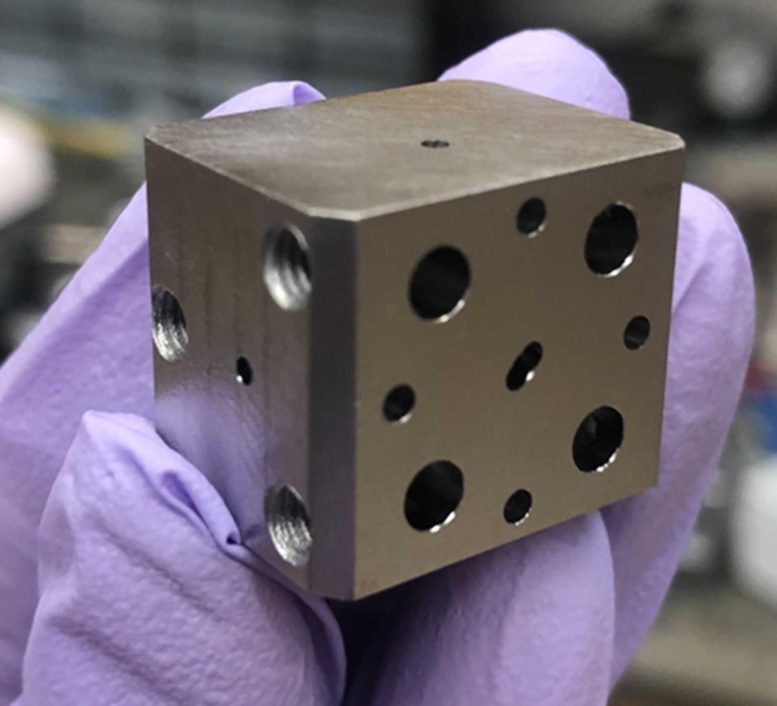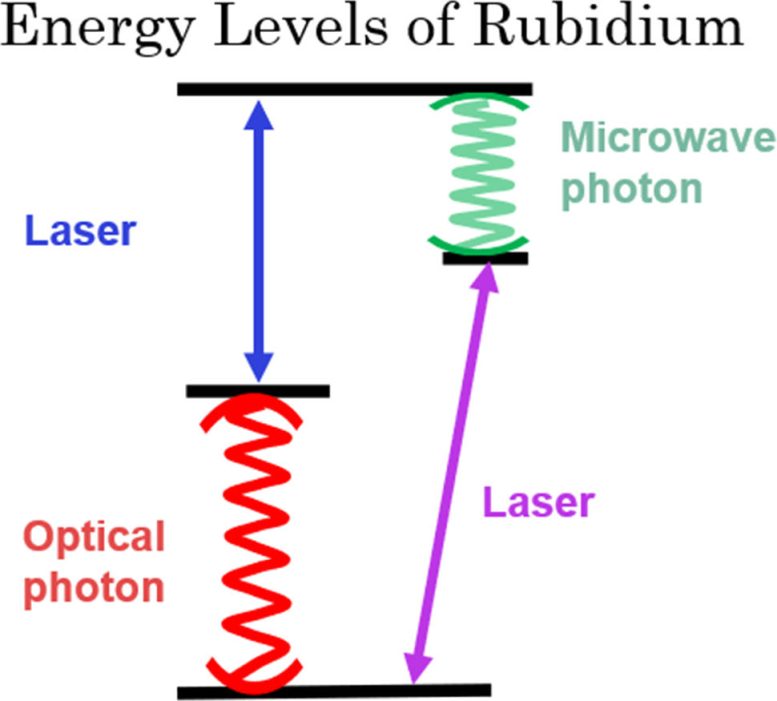A niobium superconducting cavity. The holes lead to tunnels which intersect to trap light and atoms. Credit: Aishwarya Kumar
Scientists have uncovered a method to convert quantum information between various quantum technologies, which holds significant impliciations for
A diagram of the electron energy levels of Rubidium. Two of the energy level gaps match the frequencies of optical photons and microwave photons, respectively. Lasers are used to force the electron to jump to higher levels or drop to lower levels. Credit: Aishwarya Kumar
The solution is to transfer the quantum information to a higher-frequency photon, called an optical photon, which is much more resilient against ambient noise. But the information can’t be transferred directly from photon to photon; instead, we need intermediary matter. Some experiments design solid-state devices for this purpose, but Kumar’s experiment aimed for something more fundamental: atoms.
The electrons in atoms are only ever allowed to have certain specific amounts of energy, called energy levels. If an electron is sitting at a lower energy level, it can be excited to a higher energy level by hitting it with a photon whose energy exactly matches the difference between the higher and lower level. Similarly, when an electron is forced to drop to a lower energy level, the DOI: 10.1038/s41586-023-05740-2




